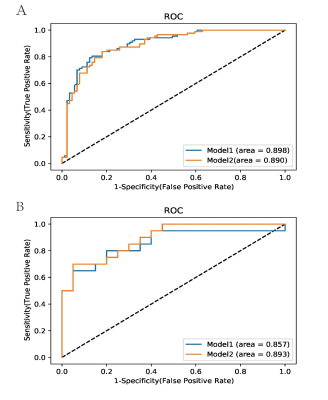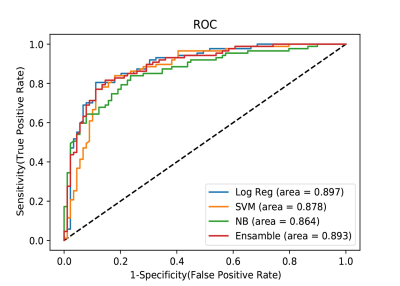jun zhang1,2, Hong Peng1, Yu-Lin Wang1, De-Kang Zhang1, and Lin Ma1
1Radiology, Chinese PLA general hospital, BeiJing, China, 2radiology, the sixth center of Chinese PLA general hospital, BeiJing, China
1Radiology, Chinese PLA general hospital, BeiJing, China, 2radiology, the sixth center of Chinese PLA general hospital, BeiJing, China
In this study, using machine learning methods, the accurate
prediction of IDH status was achieved for diffuse glioma via noninvasive MR
imaging, including ADC values and tumor morphologic features, and it is worth
mentioning ADC measurements applied are available in clinical workstations.

Multivariable
logistic regression analysis (including age, rADC and selected imaging
features) was used to predict IDH status. (A) ROC curves of the
multivariable probabilities for model 1 and model 2 show similar model
performance in the study set. Model
1 consisted of rADC, age, enhancement pattern, calcification, cystic change and
hemorrhage. Model 2 consisted of rADC, age, enhancement pattern, cystic change,
hemorrhage and absence of calcification. (B) ROC curves of the multivariable
probabilities for model 1 and model 2 show similar performance with the test
set.

Comparison
of AUCs among machine learning models. Receiver operating characteristic curves
shown for logistic regression (Log Reg), support vector machine (SVM), Naive
Bayes (NB) and Ensemble (random forest + eXtreme Gradient Boosting) in predicting
IDH status of glioma. Log Reg yielded the greatest AUC for single-model
prediction.
